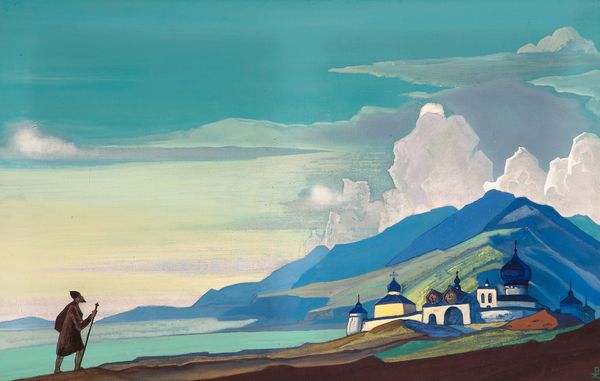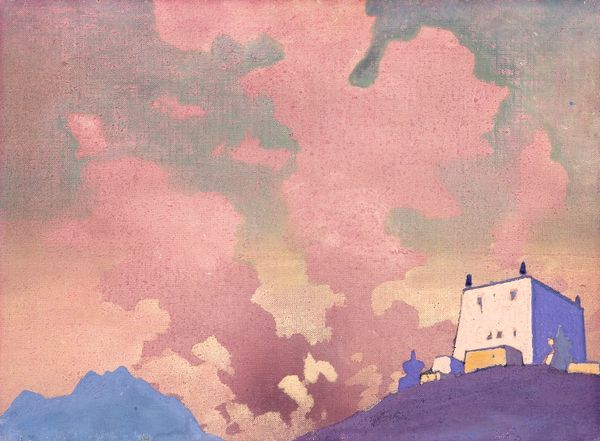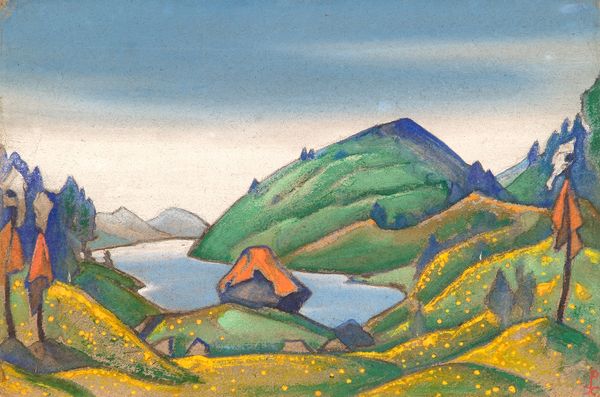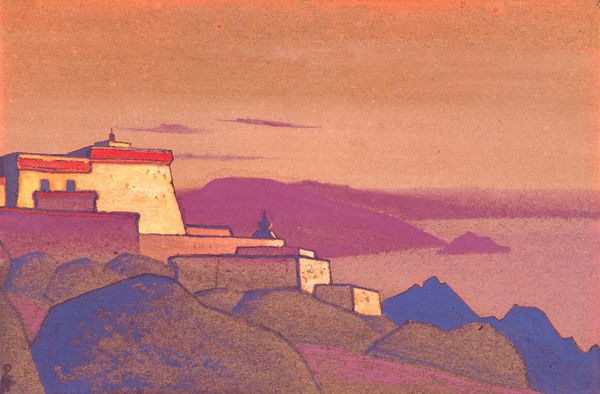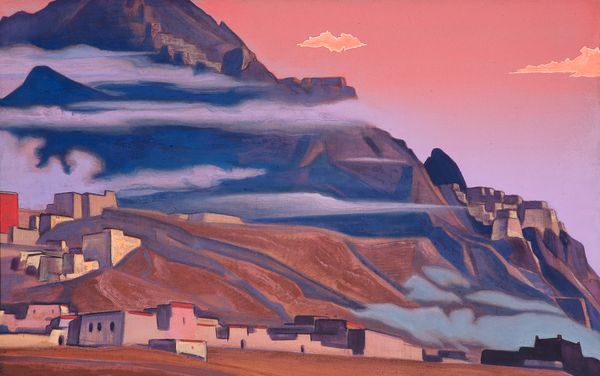
Copyright: Public domain
Editor: Here we have Nicholas Roerich's "St. Sergius Hermitage," painted in 1933. It’s an oil painting with soft, almost fairytale-like colors. There's something so peaceful about it, despite the solidity of the architecture. What can you tell me about how this work operates within the history of its time? Curator: Well, considering Roerich’s background and the socio-political context of the 1930s, especially in relation to religious sites, the seeming 'peacefulness' is rather deceptive, isn’t it? Roerich was deeply involved in spiritual and philosophical movements, and his paintings often served to promote certain ideologies. How do you think an image like this, of a religious hermitage, might have been perceived, particularly in the Soviet Union at that time, given their ambivalence toward organized religion? Editor: That's interesting. I hadn't considered the potential tension between the subject and the political climate. So, was Roerich subtly resisting the dominant ideology? Curator: It's more complex than simple resistance. Roerich’s romanticism was tied to a specific vision of Russia's past, an idealized view that incorporated spiritual elements often at odds with the Soviet's materialistic worldview. It raises questions about the artist’s intended audience, the message he hoped to convey, and the way such imagery was utilized, co-opted, or even suppressed by cultural institutions. Do you see how the art historical perspective changes our interpretation? Editor: Definitely. It’s not just a pretty landscape, it's a statement—or perhaps a negotiation—within a complicated historical framework. Thanks! Curator: Exactly! It showcases how art can both reflect and actively shape the narrative within cultural and political spheres. Now I'm seeing this artwork with fresh eyes.
Comments
No comments
Be the first to comment and join the conversation on the ultimate creative platform.
